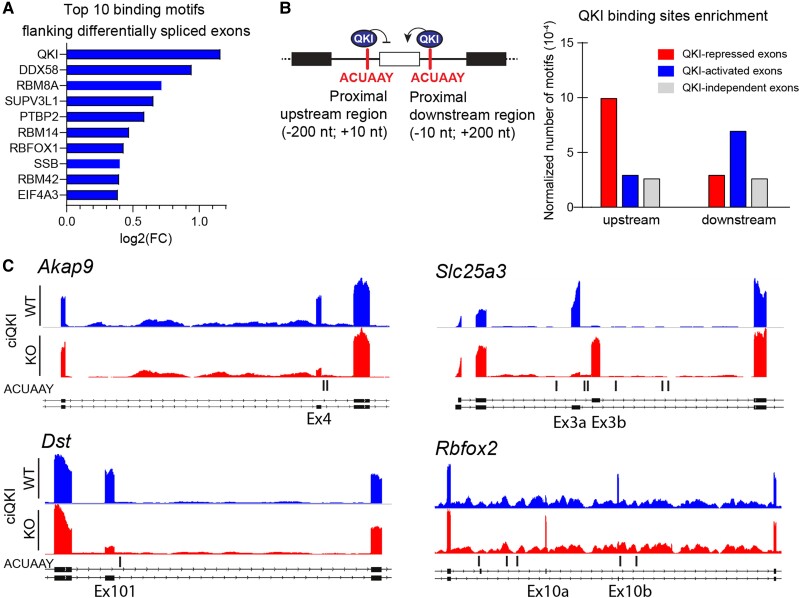Figure 5.
Location of the QKI-binding site determines whether QKI acts as a repressor or as an activator. (A) Enrichment of RNA-binding motifs surrounding differentially spliced exons in adult ciQKI KO hearts (five ciQKI WT vs. five ciQKI KO). RNA-binding motifs in an equal number of exons that were not differentially spliced were used as a reference. (B) Left panel: Schematic model to illustrate the positional effect of ACUAAY motifs in determining whether QKI acts as a repressor or as an activator of exon inclusion. Right panel: normalized number of ACUAAY motifs upstream and downstream of QKI-repressed, QKI-activated, and a random selection of QKI-independent exons. (C) Representative bedgraphs of QKI-activated and QKI-repressed exons from RNA-sequencing reads retrieved from adult ciQKI WT and KO heart (n = 5/group), and the location of ACUAAY motifs indicated by vertical lines under graphs.

